人教版高中英语必修4Body Language说课稿4篇
-
- 页数:11页
- 字数:约 21656 字
- 大小:94.50KB
- 格式:.doc
- 版本:Office2016及以上版本
- 作者:墨韵浅月
Body Language说课稿4篇
必修四uni4说课稿一
Unit 4 Body Language-ReadingCommunication: No Problem? Teacher: Cai Qiulian
Course: English
Textbook: Senior English for China (Book4), by Liu Daoyi Time Allotment: 1 period (40 minutes)
Date: March 20, 2014

Teaching aids: blackboard, Multi-media,Power Point, chalk I. Text Analysis (教材分析)
This unit is about body language, and thetext selected in the reading part demonstrates the difference and similarity ofbody language in many parts of the world. Through learning this passage,students are required to raise their awareness of using body language indifferent parts of the world. As body language is closely related to our dailylife, it is easy to arouse students’ interest in learning this text. Readingskills and speaking training are designed around the text.
II. Teaching Objectives (教学目标)
By the end of the lesson, students will beable to:
1. Language Skill Objective(语言技能目标): develop reading ability (skimming and scanning)as well as speaking ability.
2. Cultural Knowledge Objective(文化知识目标): know about the cultural differences ofusing body language.
3. Affective Objective(情感目标): increase students’ awareness of using body languagecorrectly in different cultures. III.Teaching Focuses and Difficulties(教学重点和难点)
1. Teaching Focuses(教学重点): the difference and similarity of bodylanguage in many parts of the world.
2. Teaching Difficulties(教学难点): develop students’ reading abilities of skimming andscanning and ask the students to show their opinions with fluent English.
IV. Teaching Procedures(教学步骤)
It involves five parts:
Step1. Lead-in(导入)
Step2. Pre-reading(读前活动)
Step3. While- reading(阅读)
Step4. Post-reading(读后活动)
Step5. Homework assignment(家庭作业)
The first period
Step 1. Lead-in (引入)8’
1. Show them some pictures (facialexpressions and gesture expressions) of body language then guess what do theymean. 给他们展示不同的国家习俗不同表情和动作的图片,以此来激发学生兴趣,引入肢体语言这个文章主题。 2. Presentation
Play the Finger-pointing game: a studentact out the words showed on the PPT, then other group members guess what do theymean.
课堂设计了指手画脚这个游戏,让大家踊跃参与,活跃课堂气氛。
Step2. Pre-reading(读前活动) 5’
Discuss the questions:
1. What do you think is the purpose oflanguage?
2. How would you communicate with someoneif you cannot speak? Give an example.
3. How many ways can you think of to greetsomeone if you CANNOT speak?
在阅读前让学生讨论三个问题:语言的作用、如果你不能说话怎么跟别人交流,有几种方法?通过讨论对肢体语言的寓意有深入的了解。
Step3. While-reading (阅读)
1. Fast reading 8’(快速阅读)
Read the passage quickly then fill in thechart on page27 then discuss the answers with your partners.
第三部分为阅读,分为快速阅读和精细阅读。快速阅读后完成
后练习的表格。快速阅读为了培养学生快速阅读技巧,让学生以最快的速度理解文章抓住中心主题。
2. Careful reading (精细阅读)10’
Read the text carefully then finish theexercises on the paper. 第二步我设计了5个细节问题,让学生带着问题阅读,让同学
得掌握跳读等阅读技巧,培养他们的阅读能力。
Step4. Post-reading (读后活动)7’
1. Discussion.
Ask students discuss the following question:
What are the similarities and differencesof body language between
China and other countries?
2. Summary
After learning the text, I hope thestudents can have a good understanding of the importance of gestures incommunication. Then introduce some right ways to communicate with people inother countries.
在读后的环节里我让学生通过讨论中国人常用的肢体语所表达的寓意和其他国家的不同,以此检测他们对已学文章的掌握程度并加深肢体语言的理解,在最后给他们与外国友人正确交流的方式,加强实际应用能力。
Step5. Homework (作业布置)2’
1. Recite the new words in the text.
2. Go over “Learning about language” 1. 2. And 3 on P28-29.
Blackboard design(板书设计)
一. Lead-in:
①show some pictures
②play a game
二. Pre-reading
Discuss 3 questions.
三. While reading:
①fast-reading:finish the chart
②careful-reading:do some reading exercises
四. Post-reading
Discussion.
五. Homework
①review new words
②finish the exercises on 1.2.3 on P28-29
必修四unit4说课稿二
Module 3 Body Language
Good afternoon,everyone. Today Im veryglad to have a chance to talk about my teaching ideas. My topic is Bodylanguage .It is made up of five parts.
Part 1: My understanding of this lesson
1. The analysis of the teaching materials:
This lesson is a reading passage. It playsa very important part in the English teaching of this module, because we shouldlay particular emphasis on the students’ reading ability in senior Englishteaching. In this passage, we should help the students get some knowledge aboutthe different ways to communicate with others.This passage mainly describessome greetings in European and Asian countries. At the same time, we should getthe students to understand some difficult sentences and comprehend the passagebetter. The Ss should receive some moral education.
2. Teaching aims:
a. Knowledge aim: understand the main ideaof the text.
b. Ability aim: read and understand thispassage by themselves. c. Emotional aim: increase their awareness ofcommunication.
3. Key points:
How the students can understand the textbetter.
4. Difficult points:
1. Train and improve the students’ reading and speaking ability
2. Some difficult language points in thispassage.
3. Get to know some tips of body languageand employ them in intercultural communication
Part 2: My teaching theories, methods andaids 1.Before dealing with this lesson, Ill do my best to carry out the followingtheories:
Make the Ss the real masters in classwhile the teacher myself act as a director; combine the language structureswith the language functions; let the students receive moral education whilethey are learning the English language.
2. Teaching method:
Question-and-answer activity teachingmethod.
Watch-and-listen activity teaching method.
Task-based teaching method
Pair work or individual work method.
Part 3 :Teaching procedures:
I have designed the following steps totrain their ability of listening, speaking, reading, especially readingability. The entire steps are:
Greeting and Lead-in,Fast reading,Detailedreading,Discussion, Language point and Homework
Step 1 Greeting and lead-in
1. Greet the students as usual.
2. Bring in new subject: Body language
3. Show some pictures about body languageto Ss, and let them guess the meaning. It aims to give the Ss initialimpression of body language. Step 2 Fast reading
Read the passage carefully with 1’30’’ to find out the main idea of each paragraph,
Step3 fast reading
Read the passage carefully again anddecide which ones are true and which are false. This time, Ss should not onlyget the answers to this Part , but also check the answer to Part 5. It is alsocalled depth reading or study reading .It means reading for detailedinformation.
Step 5 Discussion
Work in pairs, use 1 minute to read thispassage quickly and carefully, and then fill in the form with the details. Ssjust need to finish the part about China. The rest parts are their homework today.
Step 6 Language point
Look at the passage again, then give Sssome important language points and they should take notes.
Step 7 Homework
First, finish the rest part of part 5.Second, try your best to communicate with your classmates after class. Last,preview the other parts that we will
learn next class, especially the Grammar.
Part 4: blackboard design
Module Three Body Language and Non-verbalCommunication Topic sentences:
1. Gestures can vary from country tocountry. (How)
2. Some informal gestures. (Give examples)
3. Language point.
Part 5 :Teaching Reflection
The Ss should get more chances to practicewith each other because this passage mainly describes some greetings inEuropean and Asian countries.I think that the Ss should play a leading role butthe teacher should play an assistant role in the class.In the next time, I willmake more progresses.
That’s all. Thank you.
必修四unit4说课稿三
NSEFC 4 Unit 4 Body Language
Good morning, ladies and gentleman. It’s a great honor to be here to share myideas with you. My topic today is Body Language. It is the first class aboutreading passage “Communication:No problem?”of Unit 4, Module 4. My talk consists of 3 parts. Part A, my understanding ofthe text. Part B, teaching and learning strategies. Part C, teaching procedure.
A. About the Text
1. Analysis of the Contents
The topic of this Unit is “Body Language”. The passage titled Communication: Noproblem?, mainly introduces one incident when author received internationalstudents and observing the interesting scene about their different greetingways to each other. And the body language, which we usually use in daily lifeas a form of communication, actually reveals different cultures in the author’s eyes. By learning this passage, not onlydo students broaden their horizon on intercultural communication, but also theycould understand the importance of body language in social intercourse. It isno doubt a good topic to arouse students’ interest to explore more informationabout international customs in their own ways, such as search the internetafter class, read books, and discuss with friends even consult foreigners. Onthe other hand, students will benefit from constructing their attitudes withina respectful and tolerant worldview after study.
Teaching Goals
Knowledge Aims:
a. Understand culture differences and showone’srespect when communicating with others.
b. To use appropriate form of bodylanguage when having communication with foreigners from different countries.
Ability Aims:
a. Able to find out differences andsimilarities about behavior and interaction with others between Chinese and peoplein other countries.
b. Able to search information aboutdifferent cultures through various channels. c. Able to use skimming skill tolook for general idea.
Moral Aims:
a. Able to express oneself in both Englishand body language properly. b. Have an objective and tolerant attitude towardsdifferent cultures.
2. Important Points & Difficult Points
Important Points:
a. Get to know some common body languagesin different countries and behave them properly.
b. To establish an objective and tolerantattitude towards different cultures.
Difficult Point:
a. To use body language properly in actuallife.
b. To judge and express one’s emotion and feeling objectively towardsdifferent cultures.
B. About the Teaching Strategies andLearning Strategies According to the analysis and requirement above, I’ll try to use following theories to makestudents the real master of the class while the teacher myself the director, tolead and inspire the students to achieve the teaching goals.
Teaching Strategies:
a. Cooperating Method
b. Role Play
c. Task-based Teaching
And as for students, they are expected touse effective learning strategies as follow to adjust themselves to differenttasks during the learning procedure.
Learning Strategies:
a. To comprehend meanings of expressionsin different aspects. For instance, when learning the phrase “frown”, students can use body language to helpunderstanding.
b. Participate into the class activities,and use proper language accordingly with the situation.
c. Reflect over the performance afterclass and make adjustment in next class. d. To fulfill one’s knowledge through various resources suchas internet, library.
Teaching Aids:Multimedia,Blackboard
And I will mainly use multimedia duringthe whole teaching procedure, and blackboard will only be used for explainingsome difficult words or expressions.
C. Teaching Procedures
I designed seven steps to deal with this readingpassage.
Step 1: Lead in
Step 2: Warming Up
Step 3: Pre-reading
Step 4: Detailed Reading (A)&Role-play
Step 5: Detailed Reading (B)
Step 6: Summary
Step 7: Homework
Step 1: Lead in
Activity:Play a clip of video or movie whichconcludes a series of facial and body
language of the actors but the sound willbe turned off. Students need to judge the emotion and meaning base on the bodylanguage and give their reasons in details.
It could arouse students’ interest immediately and it’s very easy to lead in to the passage.
Step 2: Warming Up
a. To ask students act the phrases out inTask2 of “WarmingUp”, andthe others guess the meaning of the action.
b. Look at the pictures of Task1, anddiscuss the questions together.
This step mainly uses the role-play andcooperative method. Students could understand the importance of body languagewhile acting. And through cooperative with others, they will learn to share andlisten.
Step 3: Pre-reading
a. Ask students to discuss with theirpartner of Q1 to Q3, and then share the ideas in the class.
b. Before doing Q4, teacher will providesome materials in which contain customs and characteristics of countries thatmentioned in the passage. Students need to read them first and form theimpression as a preparation.
To present relative materials before majorlearning is good for the comprehension in a teaching procedure. And it’s also good for the consolidation ofknowledge.
c. Predict the topic with the help oftitle and picture of the passage,and skim the passage to check prediction.
Prediction could help students to developtheir skimming skill and get general idea of the passage.
Step 4: Detailed Reading & Role-play
a. Read paragraphs 2 and 3 carefully, andcomplete Task1 of “Comprehending”.
Paragraphs 2 and 3 mainly describe thesituation when those international students meet in the airport. Ask studentsto read carefully and complete the related task could enable them memorizedifferent body language of different characters in the book. b. Divide studentsinto groups of 7, 6 students play the roles in the text along with the asidemake by the remaining student.
Role-play will be mainly used. Studentsneed to try their best to behave features of specific character. This is funand perfectly reappear the situation of the book, which help students for abetter understanding of different cultures and body languages. Cooperative androle-play method are used again here.
Step 5: Detailed Reading (B)
a. Read paragraphs 4 and 5, sum up themain ideas and try to find out author’s attitude towards body language.
b. Make your point of view base on thequestions 5 and 6 of Task2 in
“Comprehending”.
This is the second part of detailed reading.Students will calm themselves after the interesting role-play and allocatetheir attention on the final 2 paragraphs. With generalization andunderstanding of author’s attitude, students’cognition of other cultures will bewidened at the same time. And questions 5 and 6 of Task2 in “comprehending” are the consolidation of students’ cognition of the author’s statement.
Step 6: Summary
Sum up the content in three parts of thepassage according with the above. And important words and expressions are alsoneeded to emphasize during the summary.
Step 7: Homework
With help of Internet, library, teachersetc, search for more information about body language in English speakingcountries and tell the similarities between Chinese do. Introduce yourdiscovery to the classmate next class. If possible, make a PPT to assist withyour relation.
This step is mainly set for the ability aimsmentioned above: search information about different cultures through variouschannels, and find out differences and similarities about behavior andinteraction with others between Chinese and people in other countries. Studentsdo their job independently and share their discovery to the class for sure canmake them feel much more confident so that they maintain a good motive in learningEnglish.
That’s all, thank you very much and anyquestions are welcome.
必修四unit4说课稿四
Unit4 Body language
Warming up & listening
I Brief analysis of the teachingmaterial
The theme of unit 4--- Body language is the importance of bodylanguage in our communication. The focus of this period is what a certaingesture of the body language means in a given situation. In this period,students can learn the variety of body language and their meanings. Thepictures in Warming Up provide thestudents with opportunities to work out the relative meanings of certaingestures. The Listening material isa story, which describes an accident happened in the road。 After the study of this period,students will improve their speaking and listening abilities and realize how touse different body language in the different occasions.
II Teaching goals
1 Knowledge goals
Encourage the Ss to activate the relevant vocabulary:
facial,expression, agreement, yawn, misunderstand, delighted,
punish, chest, adult, gesture, similar.
2 Ability goals
(1) Develop the Ss` abilities of speaking, listening and writing.
(2) Help the Ss to make better use of sentence structure to talkabout body language.
Actout the following meanings, please.
Please guess what I mean.
Please show the actions, using body language.
Now it is your turn to show the action / gesture.
Please use either spoken words or body language to express yourideas.
3 Emotion goals
Cultivate Ss` sense of cooperation.
IIIImportant points and difficult points
1. Teaching important points
(1)Teach the students how to understand body language used indifferent countries or cultures as well as in different occasions.
(2) Teach the students how to use bodylanguage in the most appropriate occasions.
2. Teaching difficult points
(1) Enable the students to realize the importance of bodylanguage in communication so that little or no misunderstanding may occur.
(2)Let the students know that there is both positive body language and negativebody language.
IV Teaching Approaches
(1) The Ss-centered Approach is adoptedwhile the teacher is the guide and the organizer.
(2) The Task-based Approach is adopted todesign some tasks in each step of the lesson.
(3) The situational Approach is used toarouse the Ss` interest in English learning.
V Teaching Aids: Multi-media computer
VI Teaching Procedures
Teaching Procedures
Designing purpose
Step 1. lead-in (1`)
Good news! My dear Students! The annual competition---I Love Movie-making is coming! This year`s theme is silent film.
--Do you know any silent film? What are they?
--Yes, ….
整堂课设计为学校一年一度“我爱拍电影”比赛来临,我们班需要选出一队人代表我们班去参赛。并且说明今年的比赛主题是无声电影。
在这样一个情境下学习,活跃学习气氛。
Step 2. Presentation (4`)
Play a video of silent films, Tom and Jack,..
--Do you enjoy it?
--Yes!
--Ok, how can you get information from it without words?
--Behaviors….
---So clever. We can say it body language
通过一小段学生所熟知的无声视频引入今天的主题Body language.
自然过渡,易于接受。
Step 3.Discussion and knowledge input(10`)
So, if you want to a good actor of silent film, you must learn some knowledge about body language. Now you, actors, should make some preparations for the silent film.
Discussion(5`)---pair work
Show some pictures and then ask the Ss to discuss with partner what these people are communicating.
Use the following expressions (…..)
Knowledge input(5`)
Finally, I will make a conclusion to enhance the knowledge input.
如果想演好无声电影,我们就需要学习一些与“Body language”相关知识。这一环节学生带着目的学习,易于知识的吸收。
通过幻灯片展示一些身势语图片要求他们用一下短语(本课重点词汇)讨论图片内容。知识的输入。
学生讨论完后,老师再稍做总结,对这些词语用法稍作补充,进而有巩固知识的作用。
您可能喜欢的文档
查看更多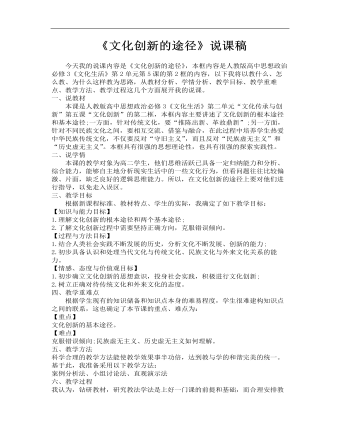
高中思想政治人教版必修三《文化创新的途径》说课稿
- 页数:4页
- |大小:33.63KB
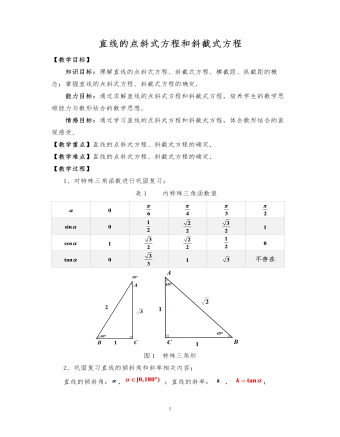
高中数学人教版必修二直线的点斜式方程教案
- 页数:5页
- |大小:253.79KB
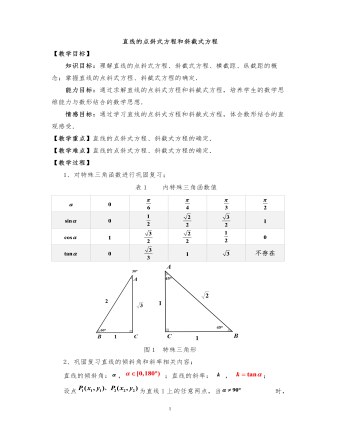
高中数学人教版必修二直线的点斜式方程教案
- 页数:5页
- |大小:253.56KB
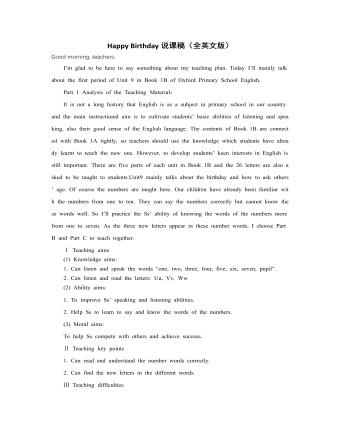
人教版新课标PEP小学英语三年级上册Happy Birthday(全英文版)说课稿
- 页数:5页
- |大小:49.00KB
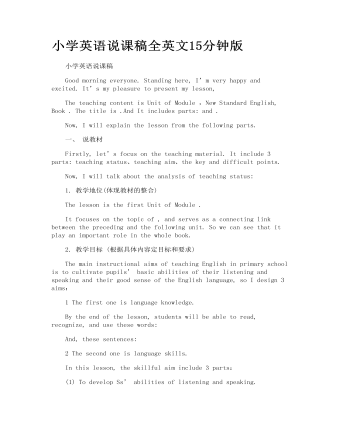
小学英语说课稿全英文15分钟版
- 页数:5页
- |大小:99.10KB
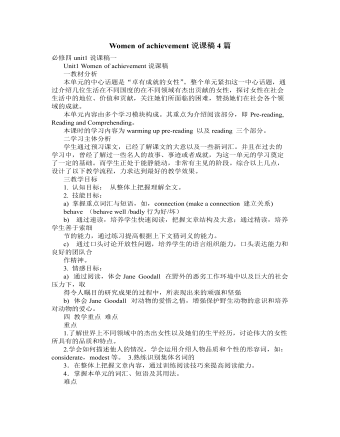
人教版高中英语必修4Women of achievement说课稿4篇
- 页数:10页
- |大小:79.00KB
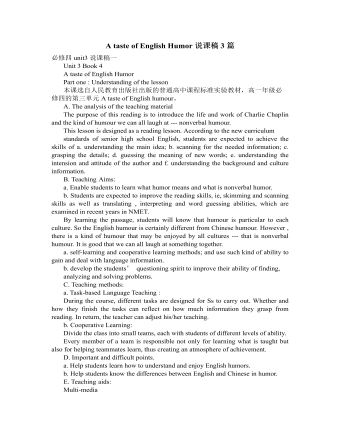
人教版高中英语必修4A taste of English Humor说课稿3篇
- 页数:10页
- |大小:146.50KB
热门说课稿
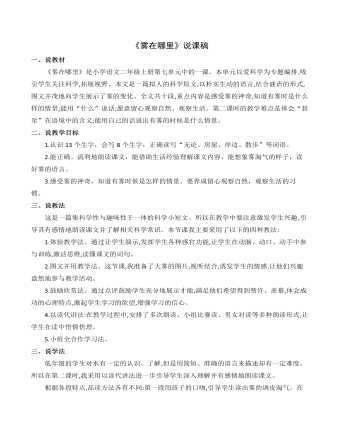
雾在哪里说课稿
- 页数:3页
- |大小:46.00KB
- 说课稿
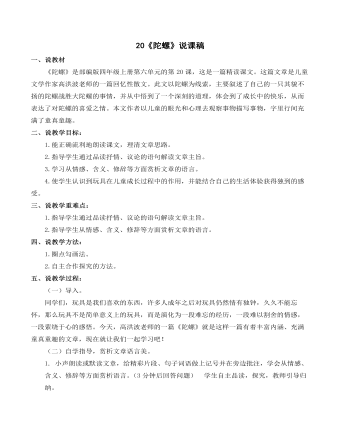
《陀螺》说课稿
- 页数:4页
- |大小:39.00KB
- 说课稿
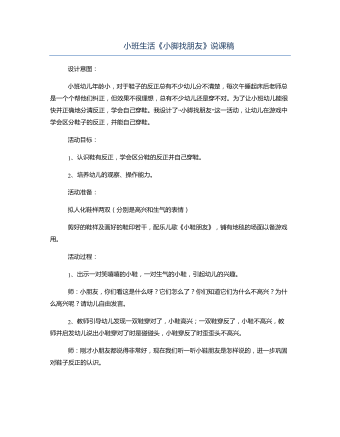
小班生活《小脚找朋友》说课稿
- 页数:2页
- |大小:33.31KB
- 说课稿
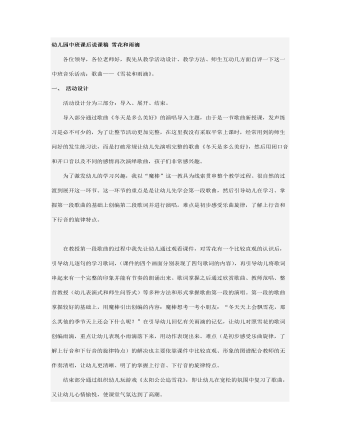
幼儿园中班课后说课稿 雪花和雨滴
- 页数:3页
- |大小:37.00KB
- 说课稿
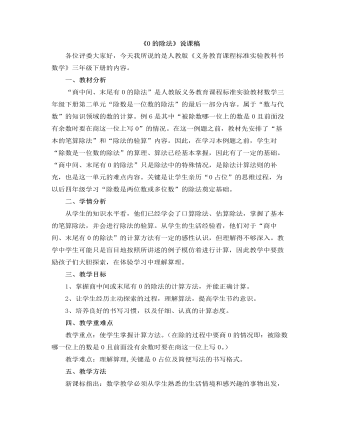
小学数学人教版三年级下册《0的除法》说课稿
- 页数:6页
- |大小:34.92KB
- 说课稿
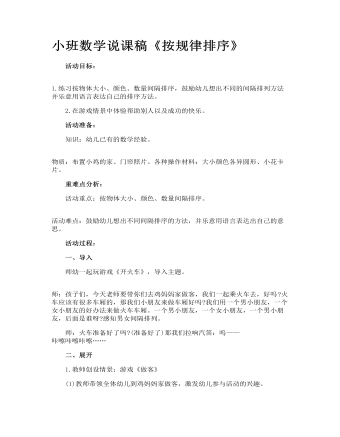
小班数学说课稿《按规律排序》
- 页数:5页
- |大小:92.24KB
- 说课稿
今日更新

精选高中生期末评语
- 页数:42页
- |大小:7M

××县招商局2024年上半年工作总结
- 页数:12页
- |大小:142.54KB

“四零”承诺服务创建工作总结
- 页数:5页
- |大小:39.83KB
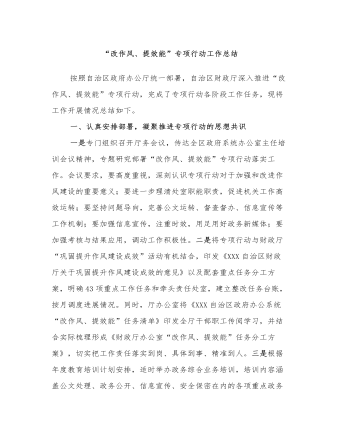
“改作风、提效能”专项行动工作总结
- 页数:6页
- |大小:139.05KB
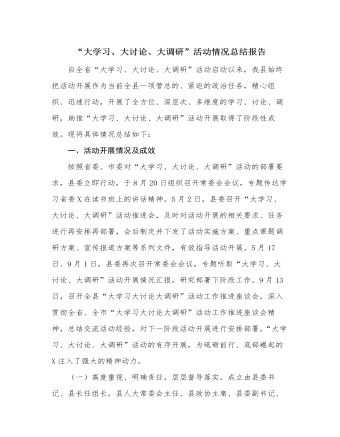
“大学习、大讨论、大调研”活动情况总结报告
- 页数:7页
- |大小:26.12KB
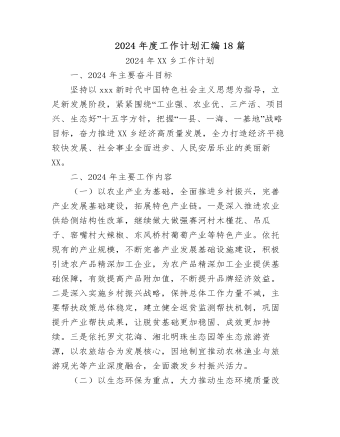
2024年度工作计划汇编(18篇)
- 页数:72页
- |大小:196.93KB





